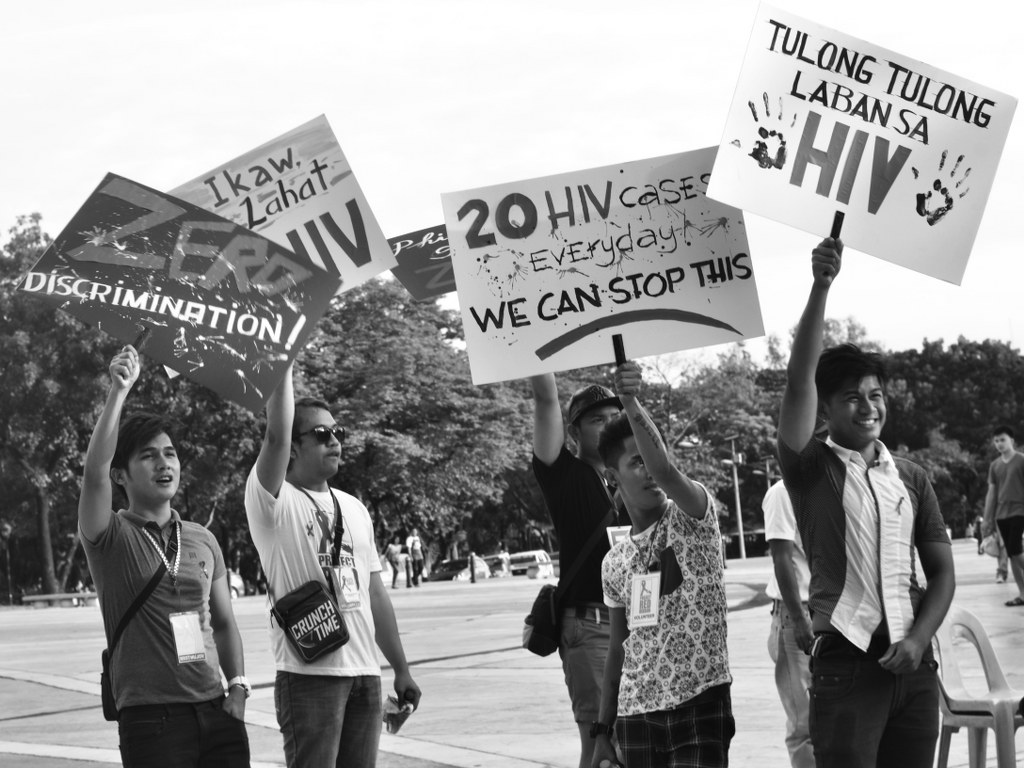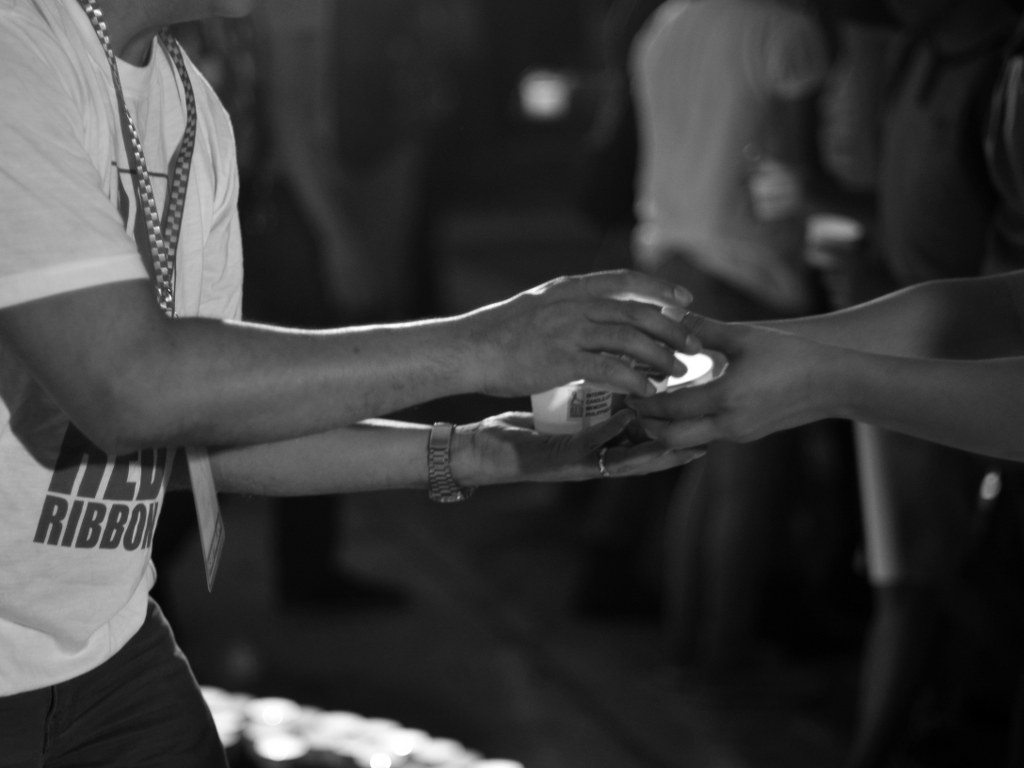Filtered By: Topstories
News
SPECIAL MULTIMEDIA FEATURE: Living with HIV in the Philippines
Text, photos, and video by JESSICA BARTOLOME, GMA News

Sam entered the HIV Testing clinic expecting to get an envelope with money. He exited with a letter that read "For confirmatory" in big block letters.
Just 16 years old, the then incoming college freshman was in no way prepared to learn that he was sick, and the disease is fatal.
"I was in denial," Sam said, recounting the events that took place a year ago. "Sabi ko, 'Totoo ba? Baka mali lang kayo.' Then they told me there was no cure for HIV."
Sam and his group of homosexual and bisexual friends were taking part in a research study. They were paid to be tested for HIV.
Out of the 10 of them, two tested positive.
Sam is but one of the 24,376 HIV-positive individuals who have been recorded by the Department of Health (DOH) from January 1984 to May 2015.
HIV, as defined by the World Health Organization (WHO), is a virus that “targets the immune system and weakens people's surveillance and defense systems against infections and some types of cancer.”
The human immune system is capable of clearing out viruses from the body, with the exception of HIV. Once a person gets infected by HIV, they have it for life.

According to the latest statistics released by the Department of Health, there were 748 new cases of infection in May, the highest recorded in a month since 1984.
The fact that majority of those who contracted HIV are homosexuals is one of the main reasons why the disease has such stigma.
“They call it the gay cancer,” said Danton Remoto, head of the LGBT party list, during the celebration of International Day of Action Against Homophobia, Transphobia, and Biphobia (IDAHOT) on May 17.
A member of Project Red Ribbon, an HIV support group, echoed this, saying “Hinuhusgahan kami...sinasabi nilang nakuha namin to dahil sa kasalanan.”
Away from society's labeling and judgment, the anguish is real for those who carry the virus.
"Ini-expect ko talaga wala," said Sam. "Oo, naging sexually active ako pero...bakit ako?"
But he acknowledges that he is lucky the virus was detected early.
The body's immune function is measured by the Cluster of Differentiation 4 (CD4) cell count. A CD4 cell count of 500 and above was what counted for normal, but a count of 350 and below required immediate treatment for HIV. A count of 200 and below meant that the disease has progressed to AIDS.
When Sam's blood test results came out, his Cluster of Differentiation 4 (CD4) cell count was already down to 334.
The body's immune function is measured by the Cluster of Differentiation 4 (CD4) cell count. A CD4 cell count of 500 and above was what counted for normal, but a count of 350 and below required immediate treatment for HIV. A count of 200 and below meant that the disease has progressed to AIDS.
When Sam's blood test results came out, his Cluster of Differentiation 4 (CD4) cell count was already down to 334.
"Before I got tested, one month na inuubo ako, hindi gumagaling," Sam revealed. "Nung nalaman ko, naisip ko 'Ah kaya pala.'"
Sam's treatment began within a few days. Others never had the same luxury.
Unlike Sam, AJ died a month after he and his boyfriend, Gab, learned that he was HIV positive. AJ was only 28.
“We found out too late,” Gab said. “It was so fast.”
Gab had known the basic facts about HIV, but it was only when he learned that AJ was infected that he studied it meticulously.
“Wala namang may gustong pag-usapan ang HIV,” Gab said. “Ngayon, pag nagshe-share ako sa Facebook, kahit isang ‘like’ wala. And I have a lot of gay friends.”
AJ’s death certificate read: “Complications of pneumonia and tuberculosis due to Acute Immune Deficiency Syndrome (AIDS) — full blown."
“Nag-separate kami ng July,” Gab shared. “He came back December. He was so thin.”
Gab had just come back from Europe, where he used to run a retail business before working as a marketing and promotions consultant for the Philippine government.
Upon seeing AJ’s drastic weight loss, Gab had immediately suspected that he was showing symptoms of HIV. Although the couple sought medical help, they pushed the HIV test until the last minute when all the other tests — ECG, blood tests — came back negative.
Upon seeing AJ’s drastic weight loss, Gab had immediately suspected that he was showing symptoms of HIV. Although the couple sought medical help, they pushed the HIV test until the last minute when all the other tests — ECG, blood tests — came back negative.
“He was afraid to find out the truth,” Gab said. “He was able to accept it because I was there with him.”
However, AJ could not be administered the antiretroviral (ARV) medicine until the doctors were sure that his system could handle it. They ran another series of tests, and AJ took all the antibiotics prescribed to him as they waited for the results.
What followed was a grueling month that proved to be his last.
“He used to sleep in my bed upstairs,” Gab reminisced. “He couldn’t go up anymore. His right leg was swollen. He couldn’t walk anymore, aakayin mo pa. That was December. It took up too much of his energy just to say something. Umiiyak ako every time I see him. It was like looking at a child from Africa.”
It was clear then that AJ’s immune system was quickly deteriorating. It reached the point where AJ’s body temperature could no longer cope with the outside temperature.
“The whole time, he had these chills,” Gab continued. “He described it as...having a lack of oxygen. After maybe around 15 minutes of chills...suddenly he has a fever -- very high fever. Tapos biglang babagsak yung almost 40 degrees to 32.”
“It hurt me, everytime nakikita ko siyang ganoon, I felt so helpless. I didn’t know what to do, I kept calling the doctor,” Gab said.
By January, AJ had developed sores in his mouth. He was eventually confined at the hospital.
Gab had needed to attend to urgent matters in Europe. He wasn’t present when AJ stopped breathing near midnight of January 16. AJ’s father, who was looking after him, did not notice.
Nobody was around when AJ breathed his last.
“Sabi ko sa kanya, ‘Hintayin mo ako, dalawang linggo lang akong mawawala,” an emotional Gab choked out. “I wasn’t able to say goodbye to him.”
Gab takes comfort in the fact that he did all he could for his boyfriend. After AJ’s death, he got himself tested, and wept when his results read “Non-reactive” (negative).
“I’m 57,” he had sobbed. “He was only 28. It’s not fair.”

According to Robert Figuracion Jr., Vice President of United Western Visayas and care manager at Project Red Ribbon, the lack of awareness is the reason why more and more are getting infected with HIV.
Figuracion says the lack of understanding hinders those infected from reaching out for help.
“Kung mas open iyong iba, it will be easier for the person to seek help,” the 34-year-old volunteer and advocate said. “Kaya nahihirapan ang batang humingi ng saklolo sa nanay niya o sa tatay niya, kasi wala ring kaalam-alam iyong nanay at tatay. Wala naman silang opportunity, hindi naman sila pumupunta sa school para ma-learn ang about HIV and AIDS.”
Figuracion has helped out in many HIV cases, witnessing the suffering the victims endure, especially those deprived of the support of their family.
He admitted that the most depressing cases sometimes made him doubt the point of helping — but having been diagnosed with AIDS himself, Figuracion feels he owes it to everyone to save as many people as he could.
“Ang isa sa mga nauna kong naisip ay, ‘Saan ako magsisimula na bumawi?’ 'Di ko alam kung gaano karami ang mga na-infect ko,” Figuracion admitted. “Pero the only thing I could do is move forward...pay it forward.”
Figuracion dedicates his time and efforts making sure that those suffering from HIV or AIDS get the help they need. Despite the occasional feelings of hopelessness, he believes that his advocacy is getting traction.
“More and more people are being diagnosed,” Figuracion said. “Ibig sabihin, these people are brave enough to go to the testing centers, or well-informed enough. So, people are seeking health services already, kaya dumadami rin.”

Project Red Ribbon and the many other HIV support groups in the Philippines — Love Yourself, ACHIEVE, Pinoy Plus Association, Inc. — are quick to emphasize that HIV does not have to be a death sentence. It may be incurable but with the proper medication, it is entirely possible to live a full life with it.
With banners like “Know your status” and “Tulong tulong laban sa HIV”, they have been making every effort to open the eyes, ears and hearts of the public.
“HIV is everybody’s concern. Hindi ito concern lang ng mga bakla, ng mga durugista, ng mga kabataan. Ang problema dito, life or death,” Figuracion said. —JJ/JST, GMA News
More Videos
Most Popular




